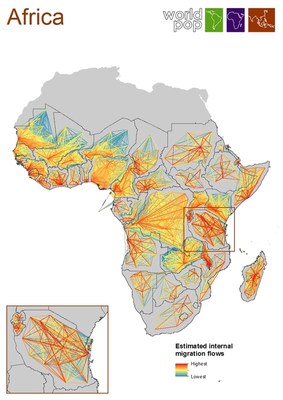Environmental Impacts on Human Populations
Populations are dynamic - Understanding and measuring these dynamics is important for disaster response, economic planning and controlling epidemics.
 Many interactions exist between the environment and human population dynamics. Global warming and climate change will probably cause tremendous migration in the future.
Many interactions exist between the environment and human population dynamics. Global warming and climate change will probably cause tremendous migration in the future.
Droughts, land use, environmental and health risks influence the distribution of human populations and their migration. Groups of differing vulnerability react differently to certain hazards. Spatial scales and geographical contexts (Burkina Faso, Senegal, Ecuador, Philippines, etc.) further influence population dynamics but also disease risks.
The focus of our research lies on the interaction between environment and migration at the household or individual level, as well as on the interactions between the different agents responsible for the transmission of vector-borne and zoonotic diseases (humans, vectors, animal hosts and the environment). We use innovative methods (resilience indicators, game, focus groups, census, etc.) to capture the high complexity and integrated approaches to spatial issues in epidemiology.
 Institute of Life, Earth and Environment
Institute of Life, Earth and Environment
